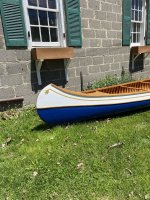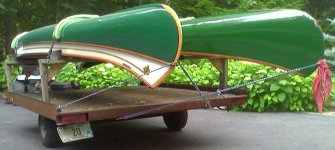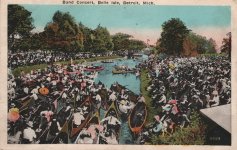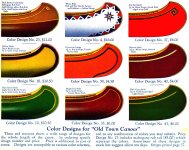While no expert, I have some opinions to share.
I’m assuming you are referring to the outer rail of a wood canvas canoe ‘gunwale’, which may be more accurately called the outwale. The corresponding inner rail would be the inwale. Combined they become the gunwale. I suppose rubrail refers to a sacrificial element of a larger boat which might spend time tied to a dock or other boat.
Although clearly a pleasing element of the finished canoe, the outwale serves several purposes including helping to secure and protect the top edges of both the canvas & planking, as well as work in concert with the inwale to create a light but strong ‘frame’ linking the ribs and planking into a single strong structure. It’s this structure which enables the hanging of the seats, fastening of the thwarts & decks. Although shaped and fastened in individual processes to become the gunwale, it’s the final linking of the outwale to the inwale, with significant arcs in both horizontal and vertical planes, which imparts immense strength to hold the entire hull together!
Inwales are usually softwood such as Spruce, while outwales are typically Ash, or in some higher grade canoes, Mahogany or Cherry.
In my experience always varnished- with spar varnish which retains some elasticity, not polyurethane based varnish which hardens and isn’t suited to the expansion & contraction of wood exposed to the elements. With regard to applying varnish I suppose it’s like the ability to cut in wall paint to a ceiling; if you‘re a steady hand it can be done but tape is surely easier!





